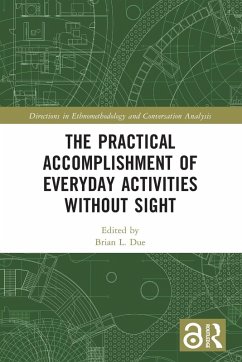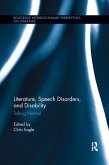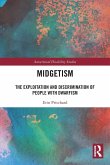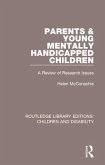The Practical Accomplishment of Everyday Activities Without Sight
Herausgeber: Due, Brian L.
The Practical Accomplishment of Everyday Activities Without Sight
Herausgeber: Due, Brian L.
- Broschiertes Buch
- Merkliste
- Auf die Merkliste
- Bewerten Bewerten
- Teilen
- Produkt teilen
- Produkterinnerung
- Produkterinnerung
This book is about the everyday life of people with visual impairment or blindness. Using video ethnographic methods and ethnomethodological conversation analysis, it unpacks the practical accomplishments of everyday activities.
Andere Kunden interessierten sich auch für
![The Disabled Schoolchild The Disabled Schoolchild]() Anderson Elizabeth M.The Disabled Schoolchild51,99 €
Anderson Elizabeth M.The Disabled Schoolchild51,99 €![Caring for the Mentally Handicapped Child Caring for the Mentally Handicapped Child]() David WilkinCaring for the Mentally Handicapped Child46,99 €
David WilkinCaring for the Mentally Handicapped Child46,99 €![Disability, Happiness and the Welfare State Disability, Happiness and the Welfare State]() Disability, Happiness and the Welfare State58,99 €
Disability, Happiness and the Welfare State58,99 €![Literature, Speech Disorders, and Disability Literature, Speech Disorders, and Disability]() Literature, Speech Disorders, and Disability55,99 €
Literature, Speech Disorders, and Disability55,99 €![Midgetism Midgetism]() Erin PritchardMidgetism55,99 €
Erin PritchardMidgetism55,99 €![Daily Living with a Handicapped Child Daily Living with a Handicapped Child]() Diana M. MillardDaily Living with a Handicapped Child32,99 €
Diana M. MillardDaily Living with a Handicapped Child32,99 €![Parents and Young Mentally Handicapped Children Parents and Young Mentally Handicapped Children]() Helen McconachieParents and Young Mentally Handicapped Children32,99 €
Helen McconachieParents and Young Mentally Handicapped Children32,99 €-
-
-
This book is about the everyday life of people with visual impairment or blindness. Using video ethnographic methods and ethnomethodological conversation analysis, it unpacks the practical accomplishments of everyday activities.
Produktdetails
- Produktdetails
- Verlag: Routledge
- Seitenzahl: 260
- Erscheinungstermin: 6. Mai 2025
- Englisch
- Abmessung: 234mm x 156mm x 14mm
- Gewicht: 401g
- ISBN-13: 9780367742591
- ISBN-10: 0367742594
- Artikelnr.: 73729944
- Herstellerkennzeichnung
- Libri GmbH
- Europaallee 1
- 36244 Bad Hersfeld
- gpsr@libri.de
- Verlag: Routledge
- Seitenzahl: 260
- Erscheinungstermin: 6. Mai 2025
- Englisch
- Abmessung: 234mm x 156mm x 14mm
- Gewicht: 401g
- ISBN-13: 9780367742591
- ISBN-10: 0367742594
- Artikelnr.: 73729944
- Herstellerkennzeichnung
- Libri GmbH
- Europaallee 1
- 36244 Bad Hersfeld
- gpsr@libri.de
Brian L. Due is an associate professor in the Department of Nordic Studies and Linguistics at the University of Copenhagen, Denmark. Due's research and teaching is within EMCA, mulitimodality, ethnographic methods, technology, socio-materiality, mobilities, perception and distributed agency, sensory impairment, and disabilities. He is the co-editor of the Social Interaction: Video-Based Studies of Human Sociality journal. He has also published in journals such as Journal of Pragmatics, Space and Culture , Mobilities, Discourse Studies, Human Studies and Semiotica.
1. The practical accomplishment of living with visual impairment: An EM/CA
approach 2. The production and reception of assistance proposals between
pedestrians and visually impaired persons during a course in locomotion and
orientation 3. Shared intelligibility in interactions between visually
impaired people and guide dogs 4. Guided by the blind: Discovering the
competences of visually impaired co-authors in the practice of
collaborative audio-description 5. Recipient design in a fractured
perceptual field: Utilizing the affordances of an object 6. Mitigating
responsibility: Attributing membership categories in the face of
tech-related troubles 7. Echo and synchrony: Social attunements in visually
impaired children's repetitive movements 8. From embodied scanning to
tactile inspections: When visually impaired people exhibit object
understanding 9. Assembling compositions: Visually impaired people and the
experience of art in museums 10. The limits of vision 11. The significance
of EM/CA studies in multimodal interaction involving visual impairment in
the field of atypical interaction research
approach 2. The production and reception of assistance proposals between
pedestrians and visually impaired persons during a course in locomotion and
orientation 3. Shared intelligibility in interactions between visually
impaired people and guide dogs 4. Guided by the blind: Discovering the
competences of visually impaired co-authors in the practice of
collaborative audio-description 5. Recipient design in a fractured
perceptual field: Utilizing the affordances of an object 6. Mitigating
responsibility: Attributing membership categories in the face of
tech-related troubles 7. Echo and synchrony: Social attunements in visually
impaired children's repetitive movements 8. From embodied scanning to
tactile inspections: When visually impaired people exhibit object
understanding 9. Assembling compositions: Visually impaired people and the
experience of art in museums 10. The limits of vision 11. The significance
of EM/CA studies in multimodal interaction involving visual impairment in
the field of atypical interaction research
1. The practical accomplishment of living with visual impairment: An EM/CA
approach 2. The production and reception of assistance proposals between
pedestrians and visually impaired persons during a course in locomotion and
orientation 3. Shared intelligibility in interactions between visually
impaired people and guide dogs 4. Guided by the blind: Discovering the
competences of visually impaired co-authors in the practice of
collaborative audio-description 5. Recipient design in a fractured
perceptual field: Utilizing the affordances of an object 6. Mitigating
responsibility: Attributing membership categories in the face of
tech-related troubles 7. Echo and synchrony: Social attunements in visually
impaired children's repetitive movements 8. From embodied scanning to
tactile inspections: When visually impaired people exhibit object
understanding 9. Assembling compositions: Visually impaired people and the
experience of art in museums 10. The limits of vision 11. The significance
of EM/CA studies in multimodal interaction involving visual impairment in
the field of atypical interaction research
approach 2. The production and reception of assistance proposals between
pedestrians and visually impaired persons during a course in locomotion and
orientation 3. Shared intelligibility in interactions between visually
impaired people and guide dogs 4. Guided by the blind: Discovering the
competences of visually impaired co-authors in the practice of
collaborative audio-description 5. Recipient design in a fractured
perceptual field: Utilizing the affordances of an object 6. Mitigating
responsibility: Attributing membership categories in the face of
tech-related troubles 7. Echo and synchrony: Social attunements in visually
impaired children's repetitive movements 8. From embodied scanning to
tactile inspections: When visually impaired people exhibit object
understanding 9. Assembling compositions: Visually impaired people and the
experience of art in museums 10. The limits of vision 11. The significance
of EM/CA studies in multimodal interaction involving visual impairment in
the field of atypical interaction research









